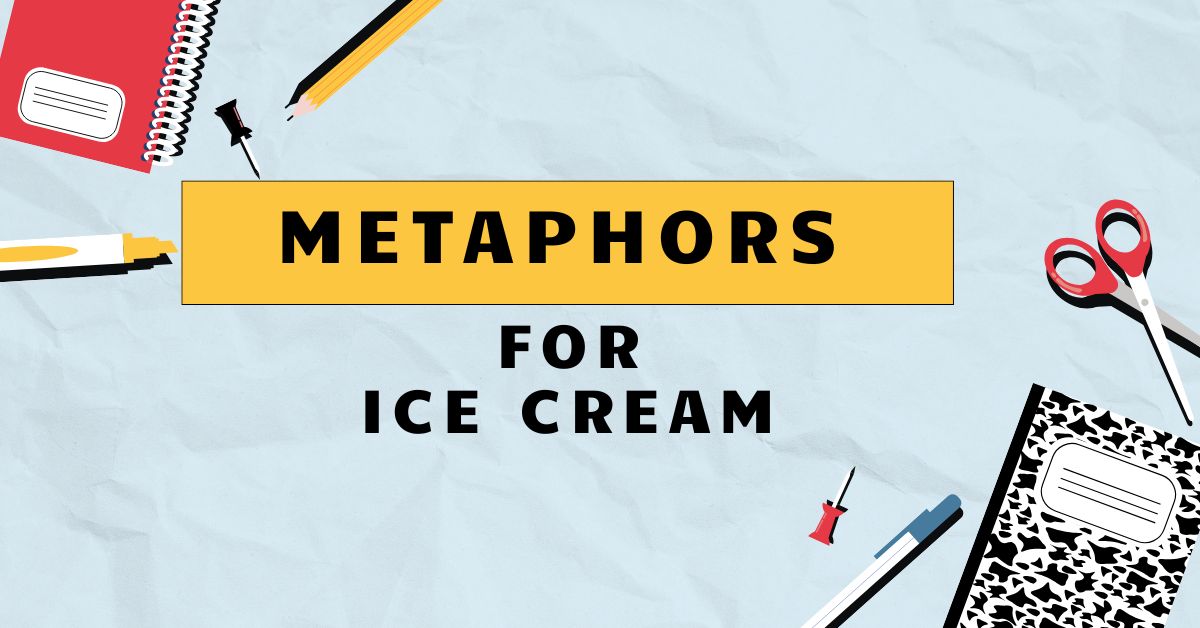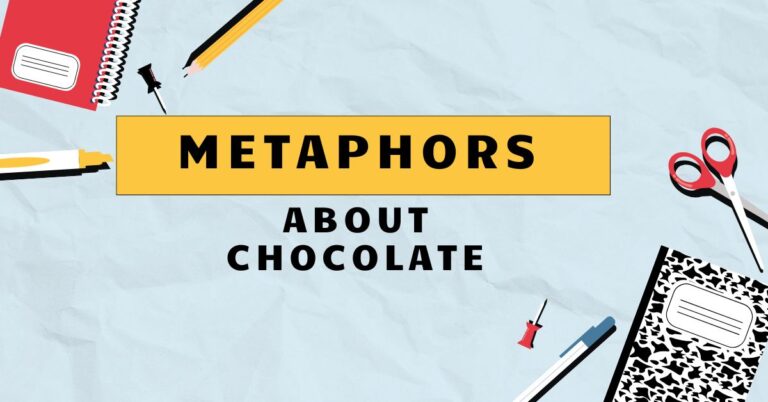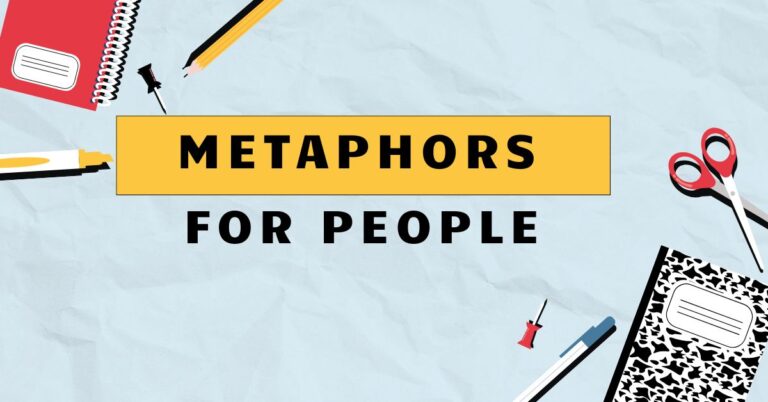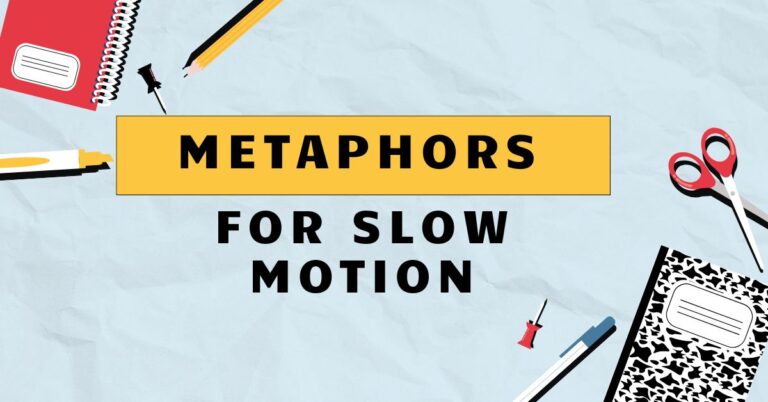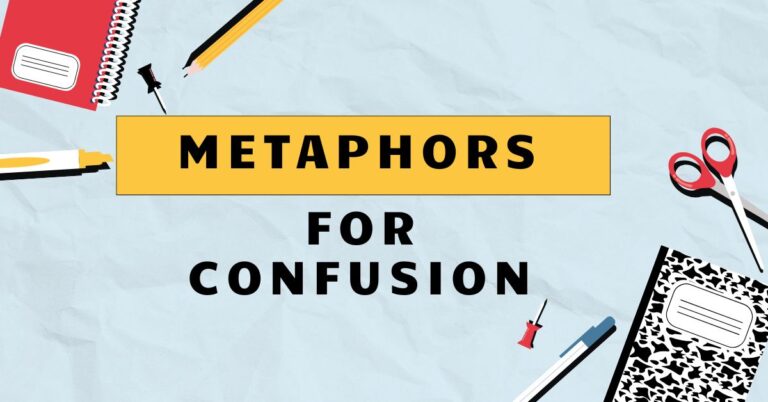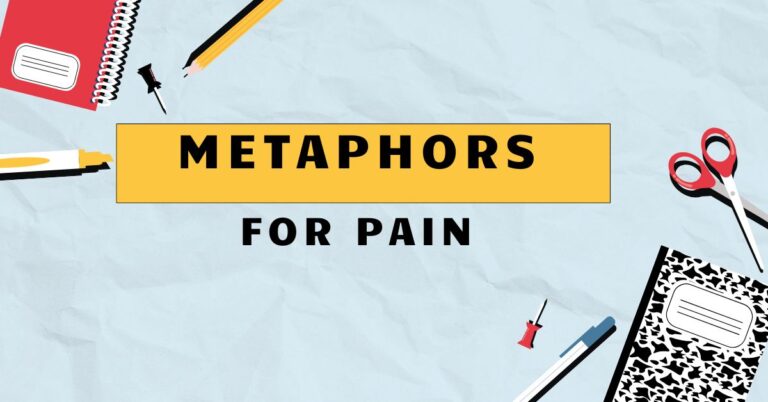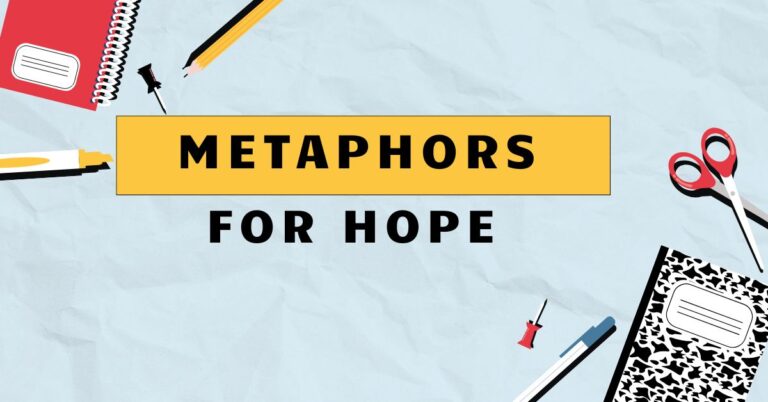43 Melting Moments: Metaphors That Capture Ice Cream’s Essence
Metaphors bring language to life, allowing us to describe familiar things in new and exciting ways. When it comes to ice cream, a treat beloved by many, metaphors can capture the essence of its taste, texture, and the joy it brings.
Understanding how metaphors work and how they can be applied to describe ice cream enhances our creative expression and appreciation for language. This article explores the art of using metaphors for ice cream, providing a comprehensive guide for anyone looking to enrich their vocabulary and descriptive skills.
Whether you’re a student, writer, or simply an ice cream enthusiast, this guide will help you master the sweet language of metaphors.
This article is designed for English language learners, creative writers, and food enthusiasts who want to explore the art of using metaphors to describe ice cream. By understanding the different types of metaphors and how they are constructed, you can create vivid and engaging descriptions that capture the essence of this delightful treat.
This guide will help you improve your writing skills and enhance your appreciation for the creative potential of language.
Table of Contents
- Definition of Metaphor
- Structural Breakdown of a Metaphor
- Types of Metaphors
- Examples of Ice Cream Metaphors
- Usage Rules for Metaphors
- Common Mistakes When Using Metaphors
- Practice Exercises
- Advanced Topics in Metaphorical Language
- Frequently Asked Questions
- Conclusion
Definition of Metaphor
A metaphor is a figure of speech that directly compares two unrelated things, suggesting a likeness or analogy between them. Unlike similes, which use words like “like” or “as” to make a comparison, metaphors state that one thingisanother.
The purpose of a metaphor is to create a vivid image or convey a deeper meaning by transferring qualities from one object or idea to another. Metaphors are essential tools in literature, poetry, and everyday language, enriching our communication and understanding.
In the context of describing ice cream, metaphors can transform a simple treat into a symbol of joy, comfort, or even adventure. By using metaphorical language, we can evoke sensory experiences and emotional responses in our audience, making our descriptions more engaging and memorable.
A well-crafted metaphor can elevate the description of ice cream from the mundane to the sublime.
Classification of Metaphors
Metaphors can be classified based on their structure and function. Here are some common classifications:
- Standard Metaphors: These are explicit comparisons where the similarity is clearly stated or implied.
- Implied Metaphors: These metaphors do not explicitly state the comparison but hint at it through suggestive language.
- Mixed Metaphors: These combine two or more incompatible metaphors, often creating a humorous or nonsensical effect.
- Dead Metaphors: These are metaphors that have become so common that they are no longer recognized as figurative language.
Function of Metaphors
The primary function of a metaphor is to provide a new perspective or understanding of a subject by associating it with something else. Metaphors can:
- Enhance Description: By painting a more vivid and imaginative picture.
- Clarify Complex Ideas: By relating them to simpler, more familiar concepts.
- Evoke Emotion: By tapping into the feelings associated with the compared objects.
- Add Depth and Meaning: By suggesting layers of interpretation beyond the literal.
Contexts of Metaphor Use
Metaphors are used in various contexts, including:
- Literature: To create rich imagery and convey complex themes.
- Poetry: To evoke emotions and explore abstract ideas.
- Everyday Language: To make conversations more engaging and expressive.
- Advertising: To create memorable and persuasive messages.
Structural Breakdown of a Metaphor
Understanding the structure of a metaphor involves recognizing its key components and how they interact to create meaning. The two main elements of a metaphor are thetenorand thevehicle.
The tenor is the subject being described, while the vehicle is the object or idea used to describe the tenor. The connection between the tenor and the vehicle is what creates the metaphorical meaning.
For example, in the metaphor “Ice cream is a sweet symphony,” “ice cream” is the tenor and “a sweet symphony” is the vehicle. The comparison suggests that ice cream, like a symphony, is composed of harmonious elements that create a delightful experience.
The effectiveness of a metaphor depends on the clarity and relevance of the connection between the tenor and the vehicle.
Effective metaphors often rely on shared characteristics or associations between the tenor and the vehicle. These shared attributes create a bridge that allows the audience to understand and appreciate the comparison.
In the ice cream example, both ice cream and a symphony are associated with pleasure, enjoyment, and a sense of harmony.
Tenor and Vehicle
Thetenoris the subject of the metaphor, the thing being described. Thevehicleis the object or idea used to describe the tenor.
Identifying these two elements is crucial for understanding how the metaphor works.
Consider the metaphor: “The ice cream was a cloud of delight.” Here, the tenor is “ice cream” and the vehicle is “a cloud of delight.” The metaphor suggests that the ice cream is light, airy, and brings joy, just like a cloud of delight.
Ground
The ground refers to the shared characteristics or associations between the tenor and the vehicle. It’s the common ground that makes the comparison meaningful and effective.
In the metaphor “Ice cream is a frozen hug,” the ground lies in the shared qualities of comfort, warmth (in an emotional sense), and a sense of being cared for. Both a hug and ice cream can provide solace and pleasure.
Tension
Tension in a metaphor arises from the differences between the tenor and the vehicle. This tension creates interest and invites the audience to think more deeply about the comparison.
In the metaphor “Ice cream is a melting dream,” the tension comes from the contrast between the solid, tangible ice cream and the ephemeral, intangible nature of a dream. This tension highlights the fleeting pleasure and transient nature of enjoying ice cream.
Types of Metaphors
Metaphors come in various forms, each with its unique way of creating comparisons and conveying meaning. Understanding these different types can help you craft more effective and nuanced metaphors.
Standard Metaphors
Standard metaphors explicitly compare two things, often using verbs like “is,” “are,” “was,” or “were.” These metaphors are straightforward and easy to identify.
Example: “Ice cream is sunshine on a spoon.” This metaphor directly equates ice cream with sunshine, suggesting that it brings warmth, happiness, and brightness.
Implied Metaphors
Implied metaphors do not explicitly state the comparison but hint at it through suggestive language. The reader must infer the connection between the tenor and the vehicle.
Example: “The scoop of ice cream whispered promises of creamy bliss.” Here, the metaphor implies that the ice cream has a voice and can offer a delightful experience, without directly stating that it is a promise.
Mixed Metaphors
Mixed metaphors combine two or more incompatible metaphors, often creating a humorous or nonsensical effect. While generally considered a stylistic flaw, they can be used intentionally for comedic effect.
Example: “The ice cream was a rollercoaster of flavor that sailed through my taste buds.” This metaphor combines the ideas of a rollercoaster and sailing, which don’t logically fit together, creating a mixed and somewhat absurd image.
Dead Metaphors
Dead metaphors are metaphors that have become so common that they are no longer recognized as figurative language. They have lost their original metaphorical impact and are used as literal expressions.
Example: “The heart of the ice cream shop.” While “heart” was originally a metaphor for the central or most important part, it is now a common expression and no longer evokes a strong sense of comparison.
Examples of Ice Cream Metaphors
This section provides a wide range of examples of metaphors used to describe ice cream, categorized by the aspect of ice cream they emphasize. These examples illustrate the versatility and creative potential of metaphorical language.
Taste Metaphors
These metaphors focus on the flavor of ice cream, using comparisons to describe its taste in a vivid and imaginative way.
The following table provides examples of taste metaphors for ice cream.
| Metaphor | Explanation |
|---|---|
| “The ice cream was a symphony of sweet notes.” | Compares the taste to a harmonious musical composition. |
| “Each spoonful was a burst of sugary sunshine.” | Relates the taste to the warmth and brightness of sunshine. |
| “The chocolate ice cream was a dark, decadent secret.” | Suggests the rich and indulgent nature of the flavor. |
| “It was a garden of fruity delights blooming on my tongue.” | Compares the taste to a vibrant and flavorful garden. |
| “The vanilla ice cream was a blank canvas for toppings.” | Suggests the flavor is simple yet versatile, ready to be enhanced. |
| “The mint chocolate chip was a refreshing breeze on a summer day.” | Compares the taste to a cool and invigorating experience. |
| “The strawberry ice cream was a sweet serenade to my taste buds.” | Relates the taste to a pleasing and gentle musical performance. |
| “The coffee ice cream was a jolt of morning energy.” | Suggests the taste is invigorating and awakening. |
| “The caramel swirl was a ribbon of liquid gold.” | Compares the flavor to something precious and luxurious. |
| “The rocky road was an adventure in every bite.” | Suggests the taste is exciting and full of surprises. |
| “The peanut butter cup ice cream was a nutty dream come true.” | Relates the taste to a delightful and satisfying dream. |
| “The cookies and cream was a sweet, comforting lullaby.” | Compares the taste to something soothing and familiar. |
| “The pistachio ice cream was an earthy whisper of flavor.” | Suggests the taste is subtle and natural. |
| “The rum raisin was a boozy ballad of sweetness.” | Compares the taste to a rich and flavorful song. |
| “The banana ice cream was a tropical vacation in a cone.” | Relates the taste to an exotic and relaxing getaway. |
| “The coconut ice cream was a creamy cloud of paradise.” | Suggests the taste is heavenly and indulgent. |
| “The lemon sorbet was a tangy kiss of sunshine.” | Compares the taste to a bright and refreshing sensation. |
| “The mango ice cream was a vibrant burst of the tropics.” | Relates the taste to an exotic and colorful experience. |
| “The blueberry ice cream was a sweet, tart melody.” | Suggests the taste is harmonious and balanced. |
| “The raspberry ripple was a dance of fruity flavors.” | Compares the taste to a lively and engaging performance. |
| “The salted caramel was a perfect balance of sweet and savory.” | Relates the taste to a harmonious blend of contrasting flavors. |
| “The butter pecan was a nutty, buttery embrace.” | Suggests the taste is comforting and rich. |
| “The maple walnut was an autumnal symphony of flavors.” | Compares the taste to a harmonious blend of fall flavors. |
| “The pumpkin spice ice cream was a cozy blanket on a cold day.” | Relates the taste to something warm and comforting. |
| “The peppermint ice cream was a winter wonderland in a scoop.” | Suggests the taste is festive and refreshing. |
| “The gingerbread ice cream was a spicy hug from the holidays.” | Compares the taste to a warm and comforting embrace. |
| “The eggnog ice cream was a creamy carol of Christmas cheer.” | Relates the taste to a festive and joyful song. |
| “The cranberry swirl was a tart and sweet symphony of flavors.” | Suggests the taste is harmonious and balanced. |
| “The apple pie ice cream was a slice of Americana in a cone.” | Compares the taste to a classic and comforting dessert. |
Texture Metaphors
These metaphors focus on the physical feel of ice cream, describing its texture in terms of other tactile experiences.
The following table provides examples of texture metaphors for ice cream:
| Metaphor | Explanation |
|---|---|
| “The ice cream was a velvet caress on my tongue.” | Compares the texture to the smooth and soft feel of velvet. |
| “It was a cloud of frozen silk.” | Relates the texture to the light and airy feel of silk. |
| “The ice cream was a creamy dream melting away.” | Suggests the texture is smooth and quickly dissolving. |
| “Each scoop was a scoop of frozen sunshine.” | Compares the texture to the warmth and brightness of sunshine. |
| “The ice cream was like a soft, cold kiss.” | Relates the texture to a gentle and refreshing touch. |
| “The ice cream was a frozen waterfall cascading down my throat.” | Compares the texture to a smooth and flowing sensation. |
| “It was like a blanket of snow on a warm day.” | Relates the texture to a cold and refreshing contrast. |
| “The ice cream was a creamy oasis in the desert of my thirst.” | Suggests the texture is refreshing and satisfying. |
| “Each spoonful was a scoop of frozen happiness.” | Compares the texture to a joyful and delightful experience. |
| “The ice cream was a velvety cloud of flavor.” | Relates the texture to a smooth and luxurious sensation. |
| “It was like a frozen hug on a hot day.” | Suggests the texture is comforting and refreshing. |
| “The ice cream was a smooth river flowing down my throat.” | Compares the texture to a gentle and continuous flow. |
| “Each bite was like a frozen serenade to my senses.” | Relates the texture to a pleasing and gentle experience. |
| “The ice cream was a creamy whisper of cold.” | Suggests the texture is smooth and subtly refreshing. |
| “It was like a frozen cloud dissolving in my mouth.” | Compares the texture to something light and ephemeral. |
| “The ice cream was a smooth, cold balm on a summer’s day.” | Relates the texture to something soothing and refreshing. |
| “Each spoonful was a scoop of frozen delight.” | Suggests the texture is joyful and pleasurable. |
| “The ice cream was a velvety smooth caress.” | Compares the texture to something luxurious and gentle. |
| “It was like a frozen silk scarf draped over my tongue.” | Relates the texture to something smooth and delicate. |
| “The ice cream was a creamy cascade of coolness.” | Suggests the texture is smooth and refreshing. |
| “Each bite was like a frozen dream melting away.” | Compares the texture to something ephemeral and delightful. |
Experience Metaphors
These metaphors focus on the overall experience of eating ice cream, capturing the emotions and feelings associated with it.
The following table provides examples of experience metaphors for ice cream:
| Metaphor | Explanation |
|---|---|
| “Eating ice cream was a journey to pure bliss.” | Compares the experience to a transformative and joyful adventure. |
| “It was a sweet escape from reality.” | Relates the experience to a temporary and pleasurable diversion. |
| “The ice cream was a hug for my soul.” | Suggests the experience is comforting and nurturing. |
| “Each spoonful was a moment of frozen happiness.” | Compares the experience to a fleeting but intense joy. |
| “Eating ice cream was like reliving a childhood memory.” | Relates the experience to nostalgia and fond recollections. |
| “It was a celebration of simple pleasures.” | Suggests the experience is a recognition of life’s small joys. |
| “The ice cream was a sweet symphony for my senses.” | Compares the experience to a harmonious and delightful performance. |
| “Eating ice cream was like a warm embrace on a cold day.” | Relates the experience to comfort and solace. |
| “It was a burst of sunshine in the middle of winter.” | Suggests the experience is bright and uplifting. |
| “The ice cream was a sweet escape from the everyday.” | Compares the experience to a temporary and pleasurable diversion. |
| “Eating ice cream was like a mini-vacation for my taste buds.” | Relates the experience to a brief but refreshing getaway. |
| “It was a moment of pure, unadulterated joy.” | Suggests the experience is genuine and delightful. |
| “The ice cream was a sweet serenade to my senses.” | Compares the experience to a pleasing and gentle performance. |
| “Eating ice cream was like a sweet dream come true.” | Relates the experience to a delightful and satisfying fantasy. |
| “It was a momentary escape from the stresses of life.” | Suggests the experience is a brief respite from worries. |
| “The ice cream was a creamy cloud of happiness.” | Compares the experience to something light, airy, and joyful. |
| “Eating ice cream was like a sweet, cold hug.” | Relates the experience to comfort and affection. |
| “It was a perfect ending to a perfect day.” | Suggests the experience is a fitting and satisfying conclusion. |
| “The ice cream was a sweet reward for a hard day’s work.” | Compares the experience to a well-deserved treat. |
| “Eating ice cream was like a trip down memory lane.” | Relates the experience to nostalgia and fond recollections. |
| “It was a taste of pure, unadulterated bliss.” | Suggests the experience is genuine and delightful. |
Usage Rules for Metaphors
Using metaphors effectively requires understanding certain rules and guidelines. While metaphors are inherently creative, adhering to these principles can help ensure clarity, impact, and appropriateness.
Clarity and Relevance
A good metaphor should be clear and relevant. The connection between the tenor and the vehicle should be easily understood, and the comparison should be meaningful.
Avoid metaphors that are too obscure or confusing.
For example, “Ice cream is a frozen song” is a clearer metaphor than “Ice cream is a quantum particle,” as the connection between ice cream and music is more intuitive than that of ice cream and quantum physics.
Originality and Freshness
Strive for originality in your metaphors. Overused or cliché metaphors can lose their impact.
Try to find fresh and imaginative ways to describe ice cream.
Instead of saying “Ice cream is a sweet treat,” try “Ice cream is sunshine on a spoon” for a more original and engaging comparison.
Consistency and Appropriateness
Maintain consistency in your metaphorical language. Avoid mixing metaphors that create contradictory or nonsensical images.
Also, ensure that your metaphors are appropriate for the context and audience.
Avoid mixing metaphors like “The ice cream was a rollercoaster of flavor that also whispered secrets.” This combines unrelated images and weakens the overall effect.
Avoiding Mixed Metaphors
Mixed metaphors occur when two or more incompatible metaphorical ideas are combined in a single expression. This often results in confusion or unintentional humor.
Incorrect: “The ice cream was a rollercoaster of flavor that also planted seeds of joy.” This combines the ideas of a rollercoaster with planting seeds, which don’t logically connect.
Correct: “The ice cream was a rollercoaster of flavor.” Or, “The ice cream planted seeds of joy in my heart.”
Contextual Appropriateness
The appropriateness of a metaphor depends on the context in which it is used. Consider the audience, the purpose of the communication, and the overall tone.
A highly abstract or complex metaphor might be suitable for a poem but less effective in a straightforward product description. The context should guide your choice of metaphorical language.
Common Mistakes When Using Metaphors
Even experienced writers can make mistakes when using metaphors. Being aware of these common pitfalls can help you avoid them and improve the effectiveness of your writing.
Overusing Metaphors
While metaphors can enhance your writing, using too many can overwhelm the reader and detract from your message. Use metaphors sparingly and purposefully.
Instead of filling every sentence with metaphorical language, focus on using metaphors where they will have the greatest impact.
Clichéd Metaphors
Clichéd metaphors are overused and predictable. They lack originality and can make your writing seem uninspired.
Avoid common metaphors and strive for fresh, creative comparisons.
Instead of saying “Ice cream is a sweet treat,” try “Ice cream is a frozen poem on my tongue.”
Confusing Metaphors
Metaphors should clarify and enhance understanding, not create confusion. Avoid metaphors that are too abstract or difficult to interpret.
Ensure that the connection between the tenor and the vehicle is clear and logical.
Incorrect vs. Correct Examples
Here are some examples of common mistakes and their corrections:
| Incorrect | Correct | Explanation |
|---|---|---|
| “The ice cream was a flying carpet of flavor.” | “The ice cream was a magic carpet ride for my taste buds.” | The original metaphor is confusing; the corrected version clarifies the experience. |
| “Ice cream is a sweet thing.” | “Ice cream is a sweet serenade on a summer’s day.” | The original is a cliché; the corrected version is more original and evocative. |
| “The ice cream was a rollercoaster of flavor that also whispered secrets.” | “The ice cream was a rollercoaster of flavor.” | The original mixes metaphors; the corrected version maintains consistency. |
| “The ice cream was a burning fire of coldness.” | “The ice cream was a refreshing firework of flavor.” | The original is contradictory; the corrected version is more logical. |
Practice Exercises
Test your understanding of metaphors with these practice exercises. Each exercise focuses on a different aspect of metaphor usage, from identifying metaphors to creating your own.
Exercise 1: Identifying Metaphors
Identify the metaphors in the following sentences:
| Question | Answer |
|---|---|
| 1. The ice cream was a velvet caress on my tongue. | velvet caress |
| 2. Each spoonful was a moment of frozen happiness. | moment of frozen happiness |
| 3. The chocolate ice cream was a dark, decadent secret. | dark, decadent secret |
| 4. Eating ice cream was a journey to pure bliss. | journey to pure bliss |
| 5. The vanilla ice cream was a blank canvas for toppings. | blank canvas |
| 6. The mint chocolate chip was a refreshing breeze on a summer day. | refreshing breeze |
| 7. The strawberry ice cream was a sweet serenade to my taste buds. | sweet serenade |
| 8. The coffee ice cream was a jolt of morning energy. | jolt of morning energy |
| 9. The caramel swirl was a ribbon of liquid gold. | ribbon of liquid gold |
| 10. The rocky road was an adventure in every bite. | adventure in every bite |
Exercise 2: Creating Metaphors
Create metaphors to describe the following aspects of ice cream:
| Aspect | Your Metaphor |
|---|---|
| The coldness of ice cream | Ice cream is a winter’s kiss on a summer’s day. |
| The sweetness of ice cream | Ice cream is a sugar plum fairy dancing on my tongue. |
| The richness of chocolate ice cream | Chocolate ice cream is a decadent indulgence. |
| The refreshing quality of mint ice cream | Mint ice cream is a cool breeze on a hot summer day. |
| The joy of eating ice cream | Eating ice cream is a journey to pure happiness. |
| The texture of ice cream | Ice cream is a smooth, velvety dream. |
| The appearance of ice cream | Ice cream is a mountain of frozen delight. |
| The melting of ice cream | Ice cream is a fleeting moment of pure bliss. |
| The taste of strawberry ice cream | Strawberry ice cream is a sweet whisper of summer. |
| The experience of sharing ice cream | Sharing ice cream is a sweet bond of friendship. |
Exercise 3: Correcting Mixed Metaphors
Rewrite the following mixed metaphors to make them more consistent and effective:
| Question | Answer |
|---|---|
| 1. The ice cream was a rollercoaster of flavor that also whispered secrets. | The ice cream was a rollercoaster of flavor. |
| 2. Eating ice cream was a journey to pure bliss that also planted seeds of joy. | Eating ice cream was a journey to pure bliss. |
| 3. The vanilla ice cream was a blank canvas for toppings that also sang a sweet serenade. | The vanilla ice cream was a blank canvas for toppings. |
| 4. The mint chocolate chip was a refreshing breeze on a summer day that also kicked down doors of flavor. | The mint chocolate chip was a refreshing breeze on a summer day. |
| 5. The strawberry ice cream was a sweet serenade to my taste buds that also danced a tango. | The strawberry ice cream was a sweet serenade to my taste buds. |
| 6. The coffee ice cream was a jolt of morning energy that also wrapped me in a warm blanket. | The coffee ice cream was a jolt of morning energy. |
| 7. The caramel swirl was a ribbon of liquid gold that also whispered sweet nothings. | The caramel swirl was a ribbon of liquid gold. |
| 8. The rocky road was an adventure in every bite that also painted a vivid picture. | The rocky road was an adventure in every bite. |
| 9. Eating ice cream was a sweet escape from reality that also built bridges to happiness. | Eating ice cream was a sweet escape from reality. |
| 10. The ice cream was a smooth river flowing down my throat that also exploded with flavor. | The ice cream was a smooth river flowing down my throat. |
Advanced Topics in Metaphorical Language
For advanced learners, exploring the deeper aspects of metaphorical language can enhance your understanding and appreciation of its power and complexity.
Extended Metaphors
An extended metaphor is a metaphor that is developed over several lines or even throughout an entire work. It allows for a more detailed and nuanced comparison, creating a richer and more immersive experience for the reader.
Example: “Life is an ice cream cone, enjoy it before it melts. Each flavor represents a different experience, from the sweet vanilla of childhood memories to the rocky road of challenges and triumphs.
The cone itself is the vessel of our journey, and the melting is a reminder that time is fleeting. So savor each lick, embrace the messiness, and share the joy with those around you.”
Conceptual Metaphors
Conceptual metaphors are underlying cognitive structures that shape our understanding of abstract concepts by relating them to more concrete experiences. They influence how we think and communicate.
Example: The conceptual metaphor “Happiness is a sweet treat” underlies many of the metaphors we use to describe happiness, such as “She’s a ray of sunshine” or “He’s full of sweetness.” This concept shapes our perception of happiness as something pleasurable and desirable.
Metaphor in Different Cultures
Metaphors can vary significantly across cultures, reflecting different values, beliefs, and experiences. Understanding these cultural differences is essential for effective cross-cultural communication.
Example: While “Ice cream is a frozen hug” might resonate in Western cultures, where hugs are common expressions of comfort, it might not have the same impact in cultures where physical touch is less prevalent. Cultural context plays a crucial role in the interpretation and effectiveness of metaphors.
Frequently Asked Questions
Here are some frequently asked questions about using metaphors, especially in the context of describing ice cream:
- What is the difference between a metaphor and a simile?
A metaphor directly equates two things (e.g., “Ice cream is sunshine”), while a simile uses “like” or “as” to make a comparison (e.g., “Ice cream is like sunshine”).
- How can I come up with original metaphors?
Think about the qualities of ice cream that you want to emphasize (e.g., its taste, texture, or the experience of eating it). Then, brainstorm other objects or ideas that share those qualities. Try to find connections that are unexpected and imaginative.
- Is it okay to use clichés in my writing?
While clichés can sometimes be useful for quick communication, they generally lack originality and can make your writing seem uninspired. Strive for fresh, creative comparisons whenever possible.
- How many metaphors should I use in a piece of writing?
Use metaphors sparingly and purposefully. Too many metaphors can overwhelm the reader and detract from your message. Focus on using metaphors where they will have the greatest impact.
- Can metaphors be used in technical or scientific writing?
Yes, but use them carefully. Metaphors can help explain complex concepts in a more accessible way, but they should not compromise accuracy or clarity. Ensure that the metaphor is appropriate for the audience and context.
Conclusion
Metaphors are powerful tools for enhancing our descriptions of ice cream, transforming simple language into vivid and engaging prose. By understanding the structure, types, and usage rules of metaphors, you can craft creative comparisons that capture the essence of this beloved treat.
Whether you’re a writer, student, or ice cream enthusiast, mastering the art of metaphorical language will enrich your communication and deepen your appreciation for the sweet symphony of words.

